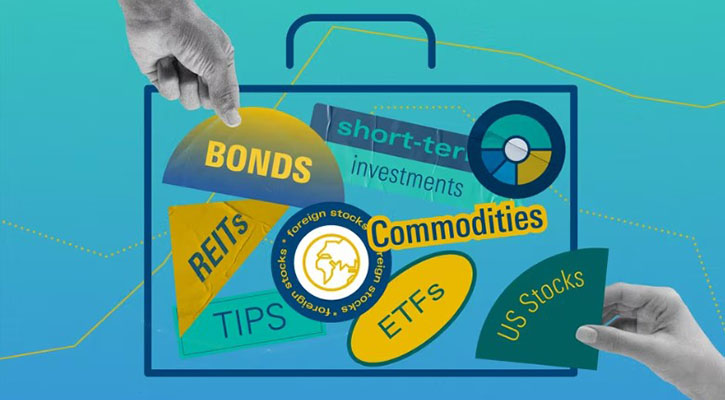Not so long ago, my newly employed friends and I applauded ourselves for being responsible and choosing to make high automatic contributions to our retirement savings accounts. A few years later, we've hardly been rewarded for taking the "prudent" route. Far from watching our savings grow, we've lost much of it.
For those of us in our twenties who are beginning to generate income and wondering how to make the most of our savings, the behaviour of the stock market during the past few years has been uninspiring to say the least. To start, the performance of U.S. equities over the past 10 years has been unimpressive. If one invested $10,000 in the Dow Jones Wilshire 5000 Index -- which tracks the 5,000 largest public companies in the United States and is a nearly complete representation of the broader stock market -- three years ago, it would have been worth about $6,500 at the end of March 2009 (based on the return of SPDR DJ Wilshire Total Market ( TMW/NYSE), an exchange-traded fund that tracks the Wilshire 5000).
What's more, the precipitous market-wide downfall that characterized the second half of 2008 called into question for many the worth of diversification, as nearly all asset classes apart from Treasury bonds suffered severe blows. This came as a shock to those who believed that diversification would help them avoid portfolio-wide stumbles. Furthermore, the deleterious and hard-to-predict impact that heavy-hitting, low-transparency vehicles such as hedge funds have had on the broader market recently, combined with the market's recent apparent disregard for company fundamentals, has left many less-sophisticated investors feeling as though the deck is stacked against them.
Yet investor sentiment often runs the most negative when it's most opportune to invest, and right now is shaping up as a golden opportunity for newbies. By many measures, stocks look cheap. Although they've been early, many of the mutual fund managers with whom Morningstar analysts speak daily have been touting the cheapness of stocks for months. Dana Love, lead manager of Invesco Trimark's flagshipTrimark Fund  , recently said that he is finding some of the world's best companies at unimaginably low prices. Meanwhile, Marty Whitman and Ian Lapey of New York-based Third Avenue Management LLC, which overseesAIC Global Focused, have been increasing their personal investments in their Third Avenue Value (sold in the U.S.) for the attractiveness of its current portfolio.
, recently said that he is finding some of the world's best companies at unimaginably low prices. Meanwhile, Marty Whitman and Ian Lapey of New York-based Third Avenue Management LLC, which overseesAIC Global Focused, have been increasing their personal investments in their Third Avenue Value (sold in the U.S.) for the attractiveness of its current portfolio.
Morningstar's stock analysts agree. The Market Valuation Graph that values in aggregate the entire universe of stocks covered by Morningstar analysts showed a ratio of 0.81 on Friday, April 3, meaning that stocks were 19% undervalued, according to our analyst team. Warren Buffett also agrees. The stock market cap/gross domestic product ratio that he uses to gauge the market's attractiveness indicates that as of March 2009, the total value of publicly traded U.S. stocks represented just more than 60% of GDP. At the end of 2007, by contrast, the stock market represented more than 140% of GDP. Buffett thinks that a higher ratio indicates overvaluation while a lower ratio indicates undervaluation.
For all of the uncertainties that plague the market, the long-term upside potential appears to be there, and the rewards are apt to be particularly great for new investors who have many years to see their investments compound.
How to do it is the question. What follows is an introductory, though not exhaustive, explanation of some of the best ways to begin investing.
Index funds
One of the most difficult decisions in investing is what kind of stocks to buy. Broadly diversified index funds make that decision easier by giving you exposure to many different companies and industries in a single mutual fund. The S&P/TSX Composite Index, for example, is typically used as a proxy for the Canadian market as a whole, while the Dow Jones Wilshire 5000 Index captures practically every stock in the U.S. market.
In addition to providing one-stop diversification, index funds can also be cheap. Traditional index funds and exchange-traded funds that track major indexes typically cost much less than actively managed mutual funds. The bank-owned fund companies in Canada such as RBC Asset Management and CIBC Securities offer a broad range of low-cost index funds. For ETFs, the market leader in Canada is Barclays Global Investors, which sponsors the popular iShares family.
All-in-one funds
Generally speaking, those of us in the early stages of our investing careers can tolerate higher stock allocations, which can present greater downside risk but also greater return potential, because we have longer time horizons over which to recoup our losses. Still, given the behaviour of the stock market in recent years and the uncertainties that do remain in the current downturn, new investors may be uncomfortable having the bulk of their assets in stocks. All-in-one funds, which make up a large portion of the Balanced fund categories in Canada, provide a nice middle ground, giving you stock exposure but also muting volatility with some bonds and cash.
Target-date funds are an all-in-one, low-maintenance way to shift from a higher to a lower stock allocation over time as your risk tolerance decreases. Both target-date and balanced funds tend to offer smoother rides than equity-only funds and are good alternatives for those who would like to start investing but are nervous about the downside risk of equities. Morningstar's Fund Analyst Picks are a great place to start looking for topnotch all-in-one options.
Dollar-cost averaging
When to buy a particular stock or mutual fund is another hot topic for investors just starting out. It's a mistake to get too hung up trying to buy and sell at the perfect time; the typical investor isn't any good at calling the market's highs and lows. Dollar-cost averaging is an easier way. Once you've decided that a certain stock or fund is a good long-term fit for you, dollar-cost averaging enables you to invest in it gradually and regularly over time. By investing uniform chunks of money at set intervals, you reduce the chance that you'll be putting a lot of money to work right before the market goes down. For a more in-depth discussion of dollar-cost averaging, click here.
There is much more to investing than the simple tips I've laid forth here, such as deciding whether to invest on your own or with the help of a financial advisor, and understanding investment vehicles such as RRSPs, but these introductory guidelines are a good start for investors who are wary of the stock market and wondering how to make good, basic decisions at a time when opportunity is abundant.
Adapted from an article published on www.morningstar.com on April 14, 2009








:quality(80)/cloudfront-us-east-1.images.arcpublishing.com/morningstar/EAAEIIRVVNE7HNVXBSGTD3WPSI.jpg)






